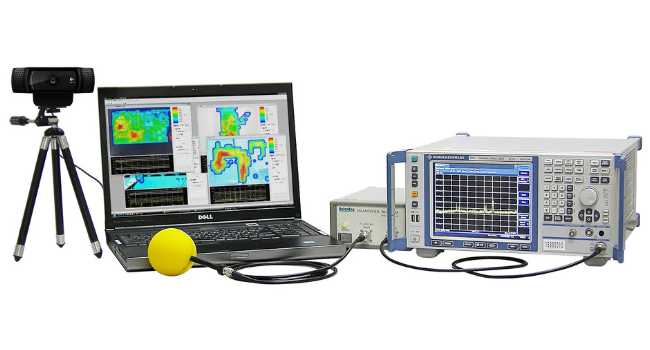1. Measuring the performance of a crystal filter
Hams use crystal filters in their radios to enhance selectivity, but short of installing the
filter there is really no easy way to test one. A spectrum analyser with a tracking generator
makes it fairly easy. Simply feed the tracking generator into the filter input and look at the
resulting response from the filter output.
A nice additional feature on some spectrum analysers is the “N dB” feature that makes it
easy to find the point where the response is N dB down from that at the filter center
frequency.
2. Testing and adjusting duplexers and diplexers
Duplexers are used in repeater installations to allow a single antenna to be used for
simultaneous receive and transmit on slightly separated frequencies. In order to do this the
duplexer has to be adjusted so that it provides the required attenuation of the transmitter
frequency so that it does not interfere with the receiver.
Any repeater owner has to deal with tuning a duplexer at some point. A spectrum analyser
with a tracking generator makes this easy.
A diplexer allows the use of a single antenna on two different bands, and is a lot smaller
than a duplexer. Lots of HAMs use diplexers in their cars to allow a single antenna to be
used on both the VHF and UHF bands.
3. Coaxial stub tuning and coaxial cable measurements
Attach a piece of coaxial cable to the input/output of the tracking generator using
a T connector. First, this shows you the frequency where the cable is 1/4
wavelength long. ¼ wavelength coaxial stubs are often used to reduce interference from
nearby transmitters. You can trim a piece of coaxial cable until you reach the frequency
you want just by cutting a small amount from the cable and watching the response on the
screen.
Another useful feature using the T-connector technique is that when you have determined
the frequency where the cable is 1/4 wavelength long you can easily determine the
physical length of the cable without actually having to measure it. All you need to know is
the frequency where the cable is 1/4 wavelength long (read from the screen on the
spec an) and the velocity factor of the cable which is a specification that can be looked up
for any type of cable.
Then the length of the cable (in feet) is calculated by the formula L = (246*Vf) / F, where
F is the frequency in MHz.
4. Antenna performance (return loss)
The return loss of an antenna is a measure of how close its impedance is to that of the
system driving it. You can measure return loss with the spectrum analyser and the tracking
generator if you have a directional coupler. By attaching the reflected port to the spectrum
analyser you can measure the return loss of an attached antenna, and you can calculate
VSWR from return loss by the formula VSWR = (1+(10^RL/20)) / ((10^RL/20)-1) where
RL is the measured return loss.
5. FM and AM Radio Channel performance.. you can demodulate, see the frequency and
amplitude deviation, etc..
Home / Knowledge Base / Knowledge Base Spectrum Analysers / Knowledge Base DSA800 Series / Common HAM and Broadcast uses for a spectrum analyser
Common HAM and Broadcast uses for a spectrum analyser
Posted on: December 16th, 2020 by Doug Lovell
Product Categories
AC Power Supplies / Frequency ConvertersDC Power Supplies
DC Electronic Loads
Test & Measurement
Safety Testers
EMC
Soldering Irons / Test Tools
Manufacturers
Rental

Service & Support
AboutContact
Newsletter
Service Returns Form
Returns Policy
Terms and Conditions
Privacy Policy
Shipping & Delivery
My account


Copyright © 2024. All rights reserved by Telonic Instruments Ltd
Website operated by Jumping Giraffe Ltd. Jumping Giraffe Ltd is not responsible for content on external websites.

































































































 FREE SHIPPING £75+
FREE SHIPPING £75+
 CELEBRATING 50+ YEARS
CELEBRATING 50+ YEARS
 PRICE MATCH GUARANTEE
PRICE MATCH GUARANTEE

